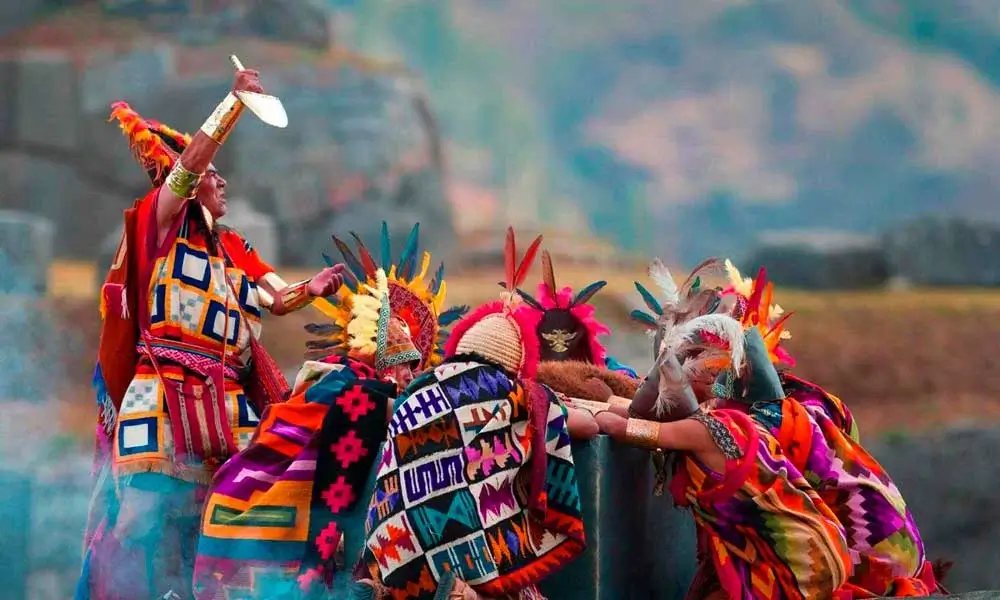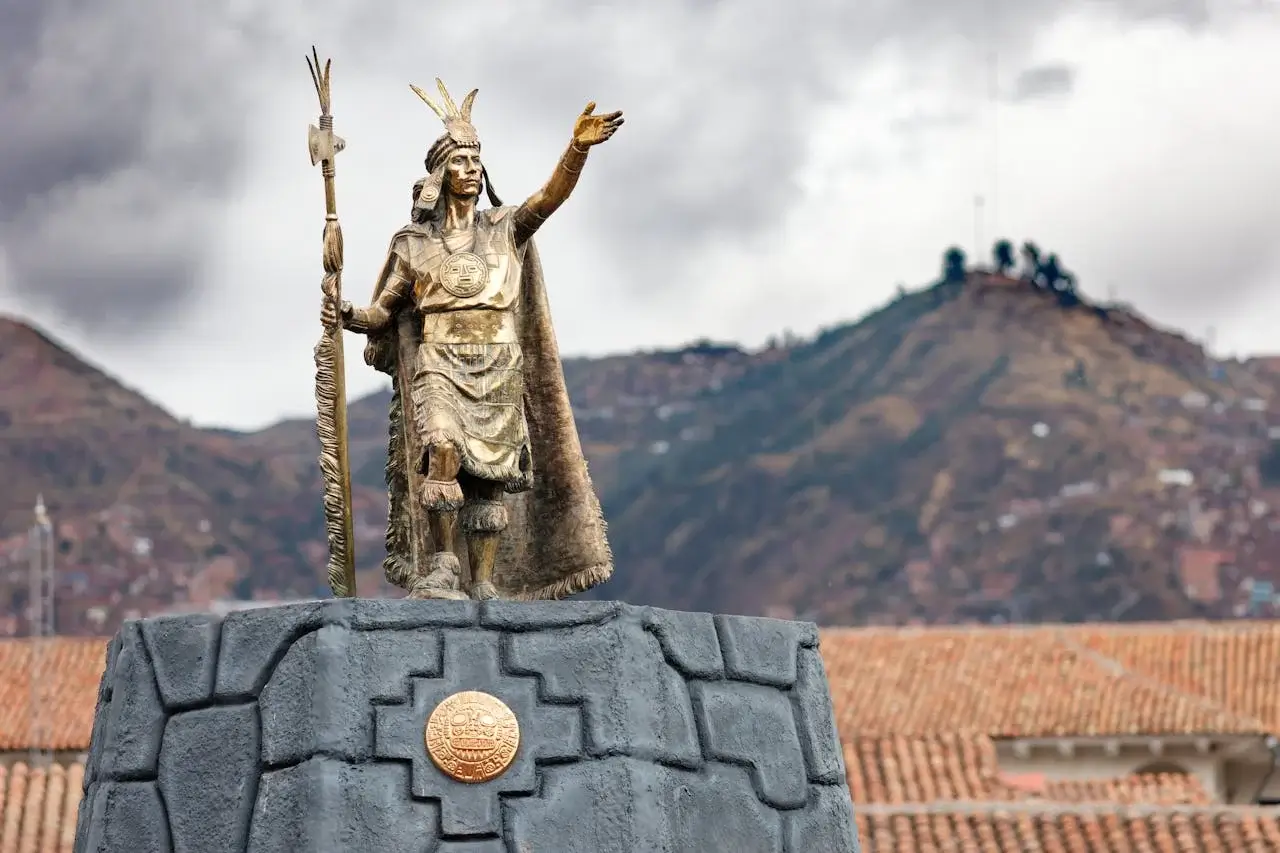Inti Raymi, a vibrant and historically rich festival, holds immense cultural significance in the Andean region. Celebrated in honor of the sun god Inti, this festival traces its origins back to the Inca Empire and remains a vital part of Peruvian culture today. Derived from the Quechua language, Inti Raymi translates to “Festival of the Sun.”
Join us as we delve into the rich historical origins, cultural significance, and vibrant celebrations of this magnificent festival, exploring how it continues to illuminate Andean heritage and traditions.
Historical Significance
Pachacutec established the festival around 1430 to honor the sun god Inti, marking the beginning of a new agricultural year. This celebration, originally known as Wawa Inti Raymi, meaning "Festival of the Sun Child," symbolized the rebirth of the sun and the start of an eternal cycle of life and agriculture.
- Purpose: Inti Raymi expressed gratitude for the harvests. The festival's rituals and offerings aimed to seek the sun god's blessings for bountiful harvests and prosperity. It also had important political implications, serving as a platform for the leaders of conquered peoples to reaffirm their loyalty to the Incas.
- Celebration: The original festivities spanned 15 days and included elaborate dances, sacrifices, processions of ancient kings' mummies, and the consumption of chicha de jora, a traditional maize beer. Delegations from various regions of the Tahuantinsuyo empire brought substantial gifts for the sun god. To welcome the sunrise, the Inca and his relatives went barefoot with open arms.
- Suppression and Revival: Spanish colonizers banned the festival in the 16th century, considering it pagan and an obstacle to Christian conversion. Despite this, indigenous communities continued to celebrate Inti Raymi clandestinely. In 1944, Faustino Espinoza Navarro and Humberto Vidal Unda in Cusco revived it publicly, drawing on Inca Garcilaso de la Vega's writings. Espinoza Navarro authored the first modern script and played the role of the Inca, reinvigorating this important cultural tradition.
Cultural and political importance
The festival demonstrated the empire's unity and strength, and people gathered in Cusco, the capital, to attend the grand ceremonies.
Attending this massive festival, the leaders of the conquered territories reaffirmed their submission to Inca authority, and delegations from the different regions of the Tahuantinsuyo Empire brought gifts to the Sun God, reaffirming their loyalty to the Inca ruler.
Inti Raymi in Cusco: A Detailed Overview
Cusco meticulously organizes the Inti Raymi celebration, unfolding events at various historically significant locations. The day begins with a sunrise ceremony at the Qorikancha Temple, where the Inca and his entourage greet the first rays of the sun.
The Plaza de Armas hosts a series of rituals and performances that culminate in the grand ceremony at Sacsayhuaman.
Greeting the Sun at Qorikancha Temple
The day's events begin at 9:00 a.m. with a ceremonial greeting to the sun at the Qorikancha Temple, which was once the most important temple in the Inca Empire. The Inca, accompanied by his royal retinue and nobles, performs the invocation to Inti.
This ceremony, filled with chants in Quechua and traditional dances, sets the tone for the day's festivities.
Meeting of the Times and Ceremonies of Coca, in Plaza de Armas
At 10:00 AM, the celebrations move to the Plaza de Armas, the heart of Cusco. Here, participants engage in dances and theatrical representations that evoke ancestral traditions.
Sacsayhuaman's Main Ceremony
At 2:00 PM Sacsayhuaman hosts the main ceremony, where participants make offerings to the sun god, including animals, corn, potatoes, coca leaves, and chicha de jora.
They also perform symbolic sacrifices of llamas, accompanied by songs and dances to the rhythm of traditional instruments like the drum and quena. The dances, expressing courage, loyalty, and joy, continue throughout the festival.
Read our full blog on all you need to know about sacsayhuaman
Inti Raymi's symbolism and rituals
Inti Raymi is rich in symbolism, with each ritual and offering carrying deep cultural significance. The offerings to the sun god, ranging from agricultural produce to animals, symbolize gratitude and the hope for continued blessings.
The dances and songs, performed with fervor and precision, reflect the Incan people's devotion and cultural pride.
Where and when is Inti Raymi celebrated?
Cusco, known as the capital of the Inca Empire, hosts the majority of the celebrations. Ecuador, Bolivia, Colombia, and northern Argentina also participate in this Tahuantinsuyo-wide festival.
Celebrated every year on June 24 in Cusco, Peru, in honor of the sun god Inti, this festival traces its origins back to the Inca Empire and remains a vital part of Peruvian culture today, coinciding with both the winter solstice and the peasant day.
You may also like our blogs:
Tickets and prices
The event in the Plaza de Armas is free of charge, while the events in Qorikancha and Sacsayhuaman have a fee. It is advisable to purchase tickets online or at local outlets in advance due to high demand.
For your convenience, you can contact us to purchase tickets, facilitate your transfer, and provide a guide to enrich your experience.
Inti Raymi is not just a festival; it is a powerful celebration of Andean culture and history. Through its ancient rituals, vibrant dances, and heartfelt offerings, this festival honors the sun god Inti while connecting communities to their deep cultural roots.
From its origins in the Inca Empire to its revival in modern times, Inti Raymi stands as a symbol of resilience, unity, and pride. Celebrated in the heart of the ancient Inca capital, Cusco, it remains a must-see experience for anyone wishing to connect with Peru’s rich cultural heritage.
The festival provides a unique opportunity to witness a vibrant display of Inca culture and history, as well as a powerful reminder of Inca cultural identity. For many, participating in or witnessing Inti Raymi is a once-in-a-lifetime experience.
Don’t miss the chance to witness this breathtaking celebration in person, book your trip with us today! Join us for an unforgettable journey through time, and immerse yourself in the spirit of Inti Raymi. Whether you’re experiencing the rituals at Qorikancha, the dances in Plaza de Armas, or the grand ceremony at Sacsayhuaman, we’ll ensure you have the best possible experience.
Plan your trip now and be part of this unique festival and experience Inca heritage!




